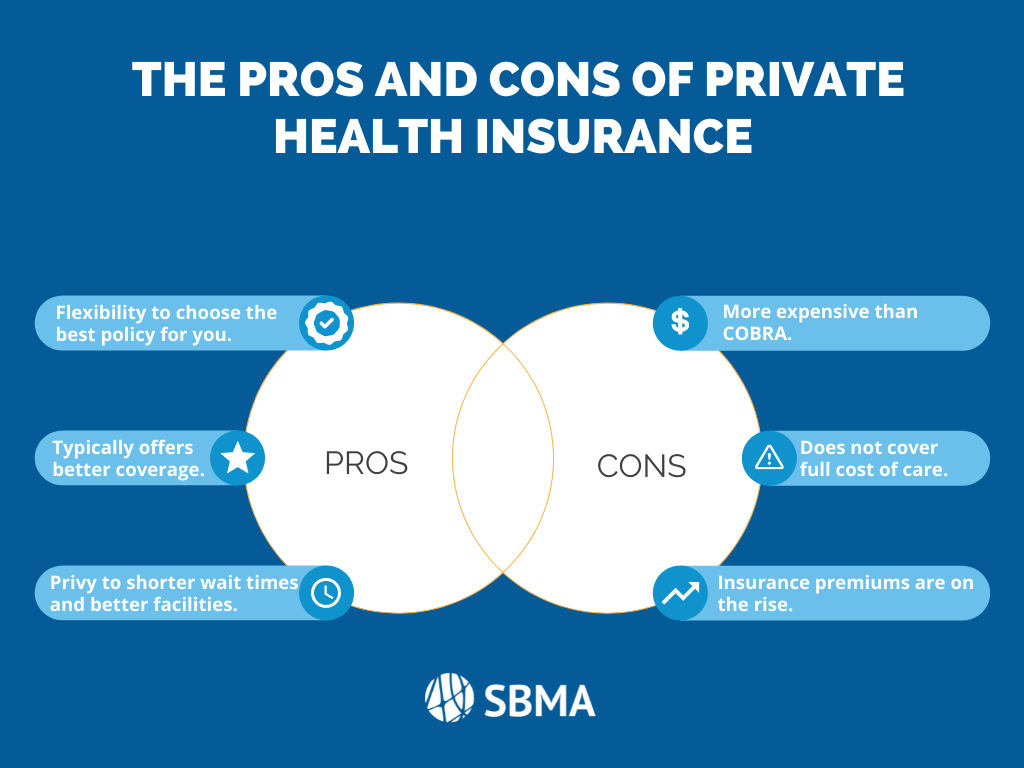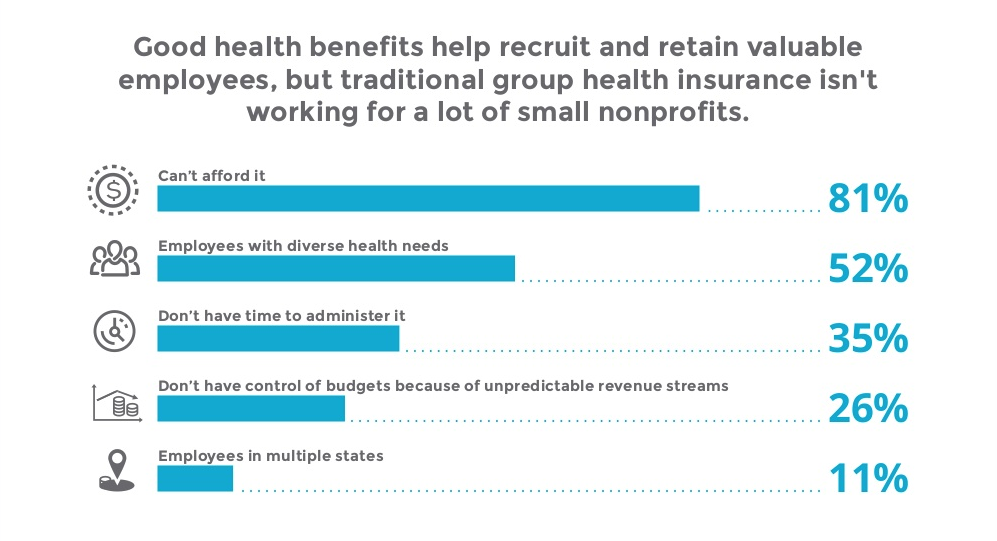Little Known Questions About Medicare Advantage Agent.
Little Known Questions About Medicare Advantage Agent.
Blog Article
The 6-Second Trick For Medicare Advantage Agent
Table of ContentsThe 30-Second Trick For Medicare Advantage AgentNot known Details About Medicare Advantage Agent The 9-Minute Rule for Medicare Advantage Agent

complies with from puzzling the relatively young age account of the uninsured with the better health, typically, of younger persons. This obscures the link between health and wellness condition and medical insurance. For those without access to workplace medical insurance, bad health is a potential obstacle to buying nongroup coverage because such coverage might be very valued, omit preexisting conditions, or be simply not available. The number of without insurance Americans is not particularly big and has not changed recently. 7 out of 10 participants in a country wide representative survey believed that fewer Americans did not have health and wellness insurance policy than in fact do(Fronstin, 1998). Roughly half(47 percent )believed that the variety of people without medical insurance reduced or continued to be consistent over the last half of the last years(Blendon et al., 1999). This decline of nearly 2 million in the variety of people 'without insurance (a decrease
of about 4 percent)is certainly a favorable change. With a softer economic climate in 2000 the most recent reported gains in insurance protection might not continue(Fronstin, 2001 ). The decline in the number of without insurance will not proceed if the economic situation continues to be sluggish and healthcare expenses remain to outpace inflation. This is because the information were collected for a duration of solid financial performance. Of the estimated 42 million people who were uninsured, all but about 420,000(regarding 1 percent)were under 65 years of age, the age at which most Americans become qualified for Medicare; 32 million were adults between ages 18 and 65, about 19 percent of all adults in this age team; and 10 million were children under 18 years old, concerning 13.9 percent of all kids (Mills, 2000). These estimates of the variety of persons uninsured are created from the yearly March Supplement to the Existing Population Survey (CPS), conducted by the Demographics Bureau. Unless or else noted, national quotes of individuals without medical insurance and proportions of the populace with various kinds of protection are based on the CPS, the most widely used source of price quotes of insurance policy protection and uninsurance prices. These studies and the price quotes they produce are described briefly in Table B. 1 in Appendix B - Medicare Advantage Agent. These studies vary in size and tasting approaches, the questions that are asked concerning insurance coverage
The Facts About Medicare Advantage Agent Revealed
protection, and the time duration over which insurance policy protection or uninsurance is determined(Lewis et al., 1998, Fronstin, 2000a ). Still, the CPS is particularly valuable because it produces annual estimates fairly swiftly, reporting the previous year's insurance policy coverage approximates each September, and because it is the basis for a regular set of quotes for greater than twenty years, permitting analysis of patterns in insurance coverage with time.

The 45-Second Trick For Medicare Advantage Agent
Over a three-year period starting early in 1993, 72 million people, 29 percent of the U.S. population, lacked insurance coverage for at the very least one month. Within a single year(1994), 53 million people experienced at least a month without insurance coverage(Bennefield, 1998a). Six out of every ten uninsured grownups are themselves used. Working does enhance the chance that one and one's family participants will certainly have insurance, it is not a guarantee. Also members of families with two full-time breadwinner have almost a one-in-ten opportunity of being uninsured (9.1 percent uninsured price)(Hoffman and Pohl, 2000 ). The connection in between medical insurance and accessibility to care is well developed, as recorded later in this phase. Although the partnership between wellness insurance and health results is neither direct nor simple, a substantial scientific and health solutions research study literature links health and wellness insurance coverage
to better access to care, far better quality, and enhanced personal and population wellness condition. The second report, on personal health and wellness outcomes for uninsured grownups, is represented by the inner circle of the figure, while the 3rd record, on family members health, includes the topics of the 2nd report however emphasizes a various system of evaluation, particularly, the family. The 6th record in the collection will present info regarding strategies and campaigns embarked on locally, statewide, or country wide to address the absence of insurance and its damaging influences. Degrees of evaluation for checking out the effects of uninsurance. This discussion of medical insurance protection concentrates mainly on the U.S. population under age 65 because virtually all Americans 65 and older have Medicare or other public coverage.
Moreover, it focuses especially on those with no wellness insurance coverage for any kind of length of time. The troubles encountered by the underinsured are in some aspects comparable to those encountered by the without insurance, although they are generally less severe. Uninsurance and underinsurance, nevertheless, entail clearly different policy issues, and the approaches for resolving them may vary. Throughout this study and the 5 records to adhere to, the primary emphasis is on persons with no health and wellness insurance and thus no support in spending for health treatment past what is readily available via charity and security internet organizations. Medical insurance is an effective factor affecting invoice of care since both clients and doctors react to the out-of-pocket cost of solutions. Medical insurance, nonetheless, is neither essential neither enough to acquire accessibility to clinical solutions. The independent and direct impact of health and wellness
insurance coverage protection access accessibility health wellness solutions well establishedDeveloped Others will acquire the healthcare they require also without health insurance, by paying for it expense or seeking it more from providers who use treatment cost-free or at extremely subsidized prices. For still others, medical insurance alone does not guarantee receipt of treatment due to other nonfinancial barriers, such as an absence of healthcare companies in their area, limited accessibility to transportation, illiteracy, or etymological and social distinctions. Official research about uninsured populations in the USA dates to the late 1920s and very early 1930s when the Committee on the Cost of Treatment generated a series of reports about financing physician workplace gos to and hospitalizations. This issue ended up being significant as the numbers of medically indigent climbed throughout the Great Anxiety. Empirical studies regularly support the link between access to care and enhanced health and wellness end results(Bindman et al., 1995; Starfield, 1995 ). Having a normal source of treatment can be taken into consideration a forecaster of accessibility, as opposed to a direct step of it, when health results are themselves utilized as gain access to indications. This expansion of the concept of accessibility dimension was made by the IOM Board on Keeping Track Of Access to Personal Healthcare Services(Millman, 1993, p. Whether or not moms and dads are insured appears to affect whether their kids obtain care along with just how much careeven if the youngsters themselves have insurance coverage(Hanson, 1998). The health and wellness of parents can affect their capacity to link look after their children and the degree of family tension. Fretting about their youngsters's access to care is itself a resource of anxiety for parents. 3 phases comply with in this report. Phase 2 supplies an introduction of just how employment-based wellness insurance coverage, public programs and private insurance coverage policies operate and connect to provide comprehensive however insufficient protection of the united state populace. This includes an evaluation of historical fads and public laws impacting both public and exclusive insurance, a conversation of the communications among the various sorts of insurance, and an examination of why individuals move from one program to another or finish up

Report this page